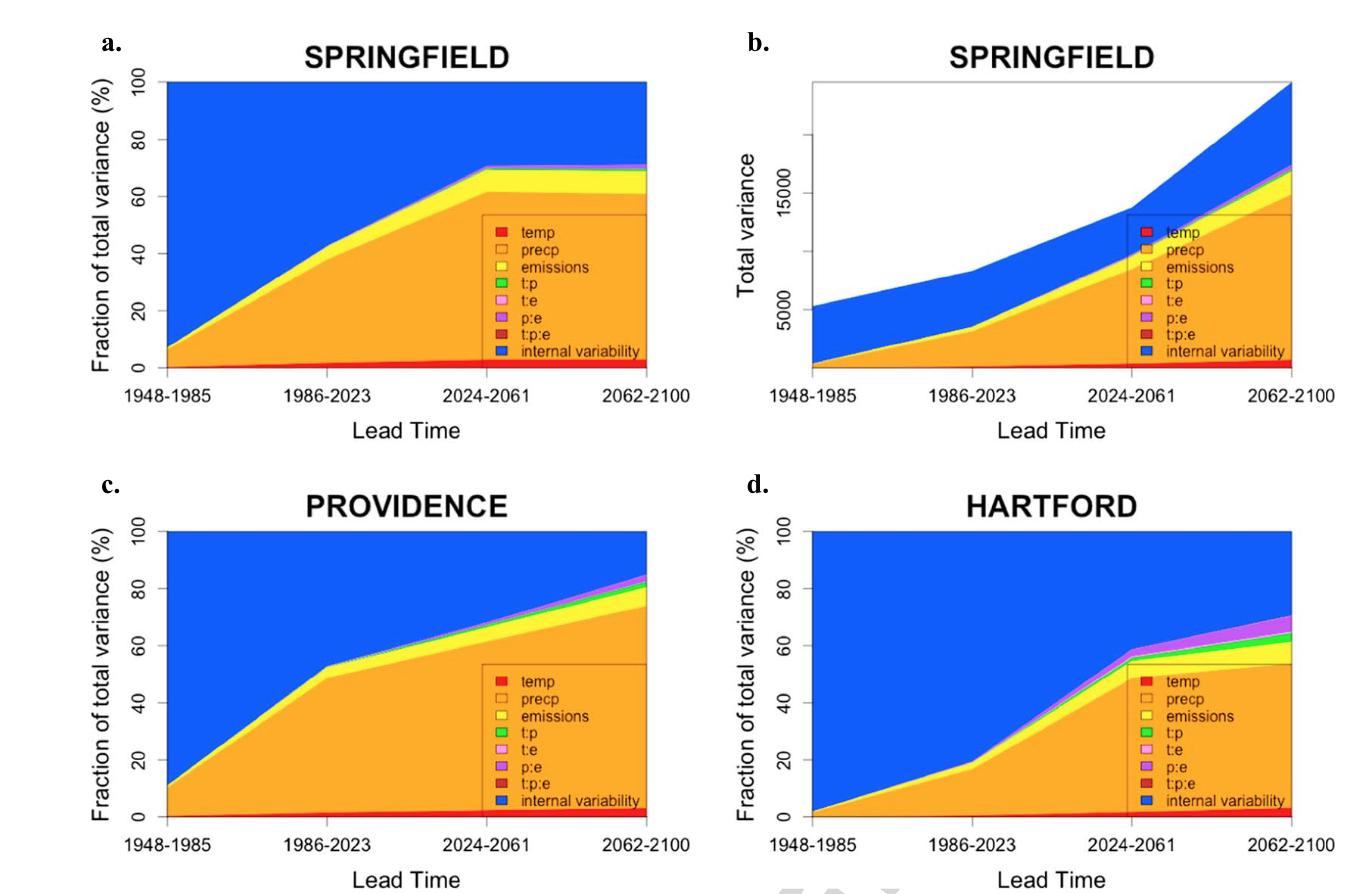
Assessing the relative effects of emissions, climate means, and variability on large water supply systems
Some of the greatest societal risks of climate change rise from the potential impacts to water supply. Yet prescribing adaptation policies in the near term is made difficult by the uncertainty in climate projections at relevant spatial scales and the conflating effects of uncertainties in emissions, model error, and internal variability. In this work, a new framework is implemented to explore the vulnerability of reservoir systems in the northeastern U.S. to climate change and attribute vulnerabilities to changes in mean climate, natural variability, or emission scenarios. Analysis of variance is used to explore the contributions of uncertainties to system performance. Diagnosing the relative risks to water supply will help water resource engineers better adapt to uncertain future conditions. The results indicate that uncertainty in water supply system performance can be attributed mostly to uncertainty in internal variability over policy-relevant planning horizons, and thus, adaptation efforts should focus on managing variability.
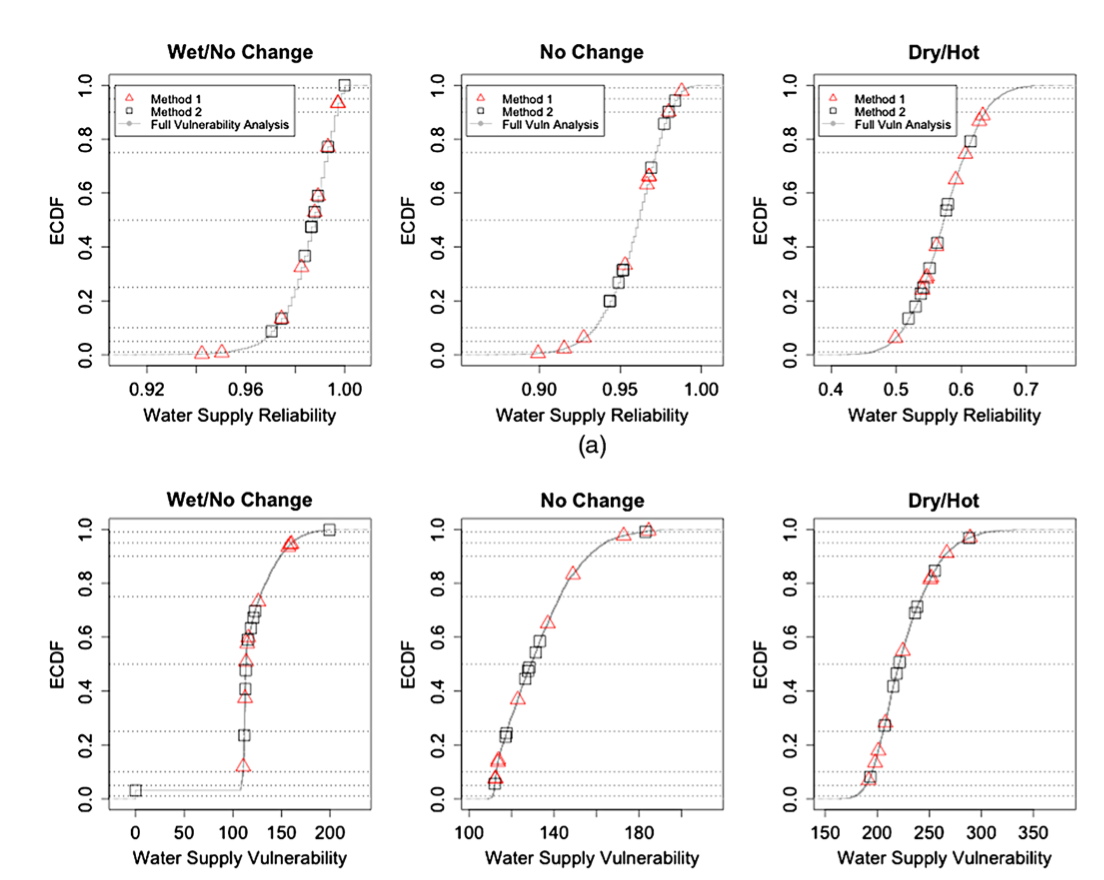
Selecting stochastic climate realizations to efficiently explore a wide range of climate risk to water resource systems
There are significant computational requirements for assessing climate change impacts on water resource system reliability and vulnerability, particularly when analyzing a wide range of plausible scenarios. These requirements often deter analysts from exhaustively identifying climate hazards. This technical note investigates two approaches for generating a subset of stochastic climate realizations that efficiently explore a range of risk to water supply systems. In both methods, a large ensemble of stochastic weather time series is generated to simulate the natural variability of the local climate system, and a selected subset of these sequences is used in the impacts assessment. Method 1 selects the subset by first passing the entire ensemble through a rainfall-runoff model and then screening the hydrologic sequences using the sequent peak algorithm. Method 2 selects a subset of climate sequences based on climate statistics alone, prior to hydrological modeling. Both methods provide insight for identifying the climate statistics that best relate to the vulnerability of the water system and can be used to reduce the computational burden of modeling climate variability and change impacts.
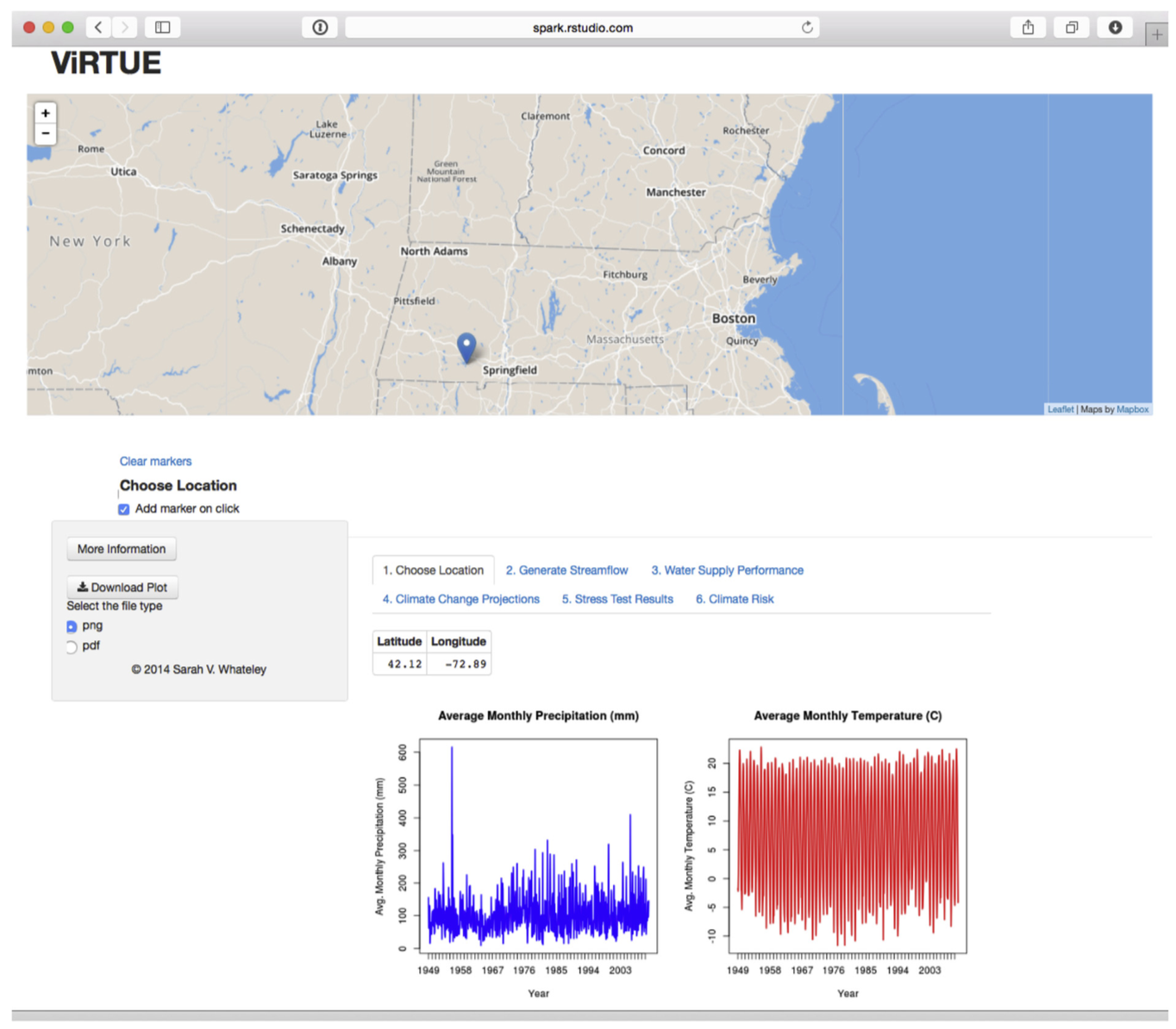
A web-based screening model for climate risk to water supply systems in the northeastern United States
The aim of this study is to describe the development and application of a web-based decision support tool (ViRTUE) for performing climate risk evaluations of water supply systems. The tool is designed for small-scale water utilities in the northeastern United States that may lack the resources for detailed climate change risk investigations. Development of this tool demonstrates a relatively new approach to web application development using the Shiny framework for the R programming language to create an interactive environment for stakeholders and water managers to explore climate vulnerabilities. Using a decision-scaling framework, the tool allows the user to perform a climate stress test to evaluate the performance and vulnerability to water supply shortfalls of local reservoir systems over a wide range of potential climate change scenarios using a generic systems model. Probabilities of future climate conditions derived from climate projections then help inform utility operators of impending risk.
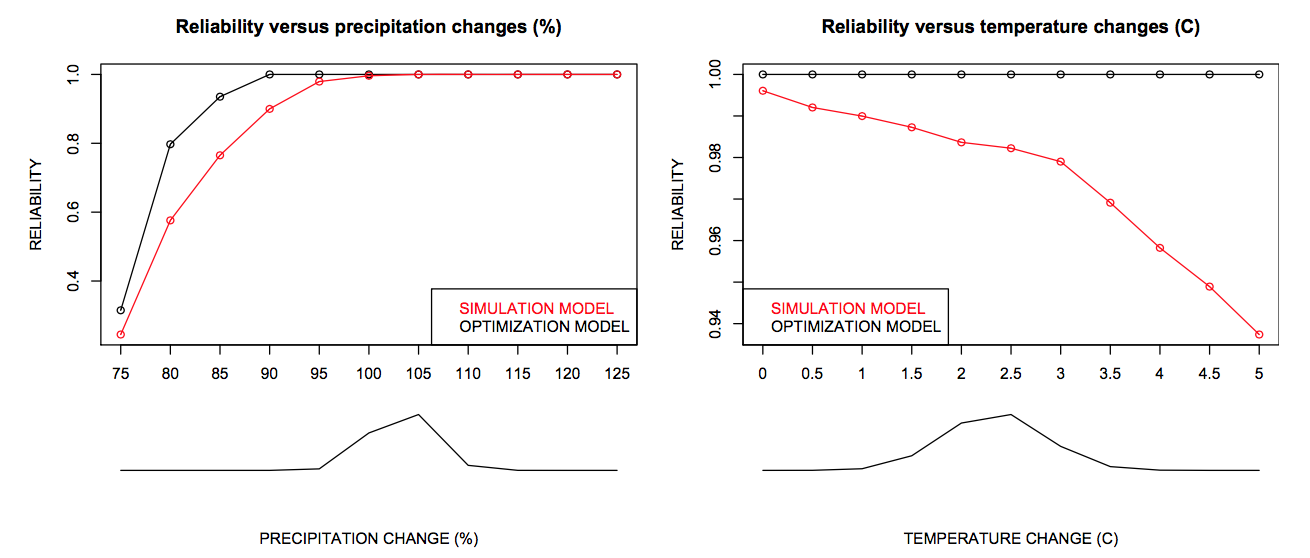
A climate change range‐based method for estimating robustness for water resources supply
Many water planning and operation decisions are affected by climate uncertainty. Given concerns about the effects of uncertainty on the outcomes of long-term decisions, many water planners seek adaptation alternatives that are robust given a wide range of possible climate futures. However, there is no standardized paradigm for quantifying robustness in the water sector. This study uses a new framework for assessing the impact of future climate change and uncertainty on water supply systems and defines and demonstrates a new metric for quantifying climate robustness. The metric is based on the range of climate change space over which an alternative provides acceptable performance. The metric is independent of assumptions regarding future climate; however, GCM-based (or other) climate projections can be used to create a “climate-informed” version of the metric. The method is demonstrated for a water supply system in the northeast United States to evaluate the additional robustness that can be attained through optimal operational changes, by comparing optimal reservoir operations with current reservoir operations. Results show the additional robustness gained through adaptation. They also reveal the additional insight regarding robust adaptation gained from the decision-scaling approach that would not be discerned using a GCM projection-based analysis.
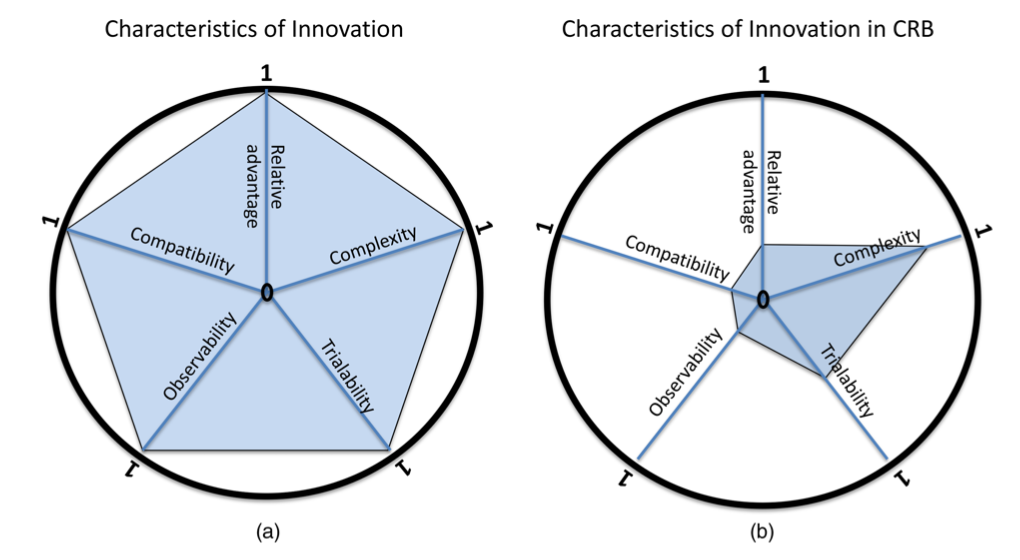
Seasonal hydroclimatic forecasts as innovations and the challenges of adoption by water managers
Technological advances in forecasting the Earth’s climate offer a potentially useful tool to support planning and management decisions in water resources. Previous research has found that the implementation of new ideas and practices are impeded by many challenges such as low forecast skill, institutional obstacles, and political disincentives to innovation. To better understand barriers to forecast use at seasonal-to-interannual, decadal, or longer time scales, this paper evaluates a diffusion of innovations (DoI) framework to assess the adoption of hydroclimatic forecasts by water managers in the Northeast United States. Specifically, this paper seeks to understand how five innovation characteristics, relative advantage, compatibility, complexity, trialability, and observability, influence the rate of adoption. Methods used for this analysis include the distribution of a survey, interviews, and a literature review. Results indicated that while much attention has focused on institutional obstacles, in the Connecticut River Basin obstacles were related to characteristics of the forecasts themselves. Evaluation of the DoI makes clear that the challenges to forecast use are common to all innovations.
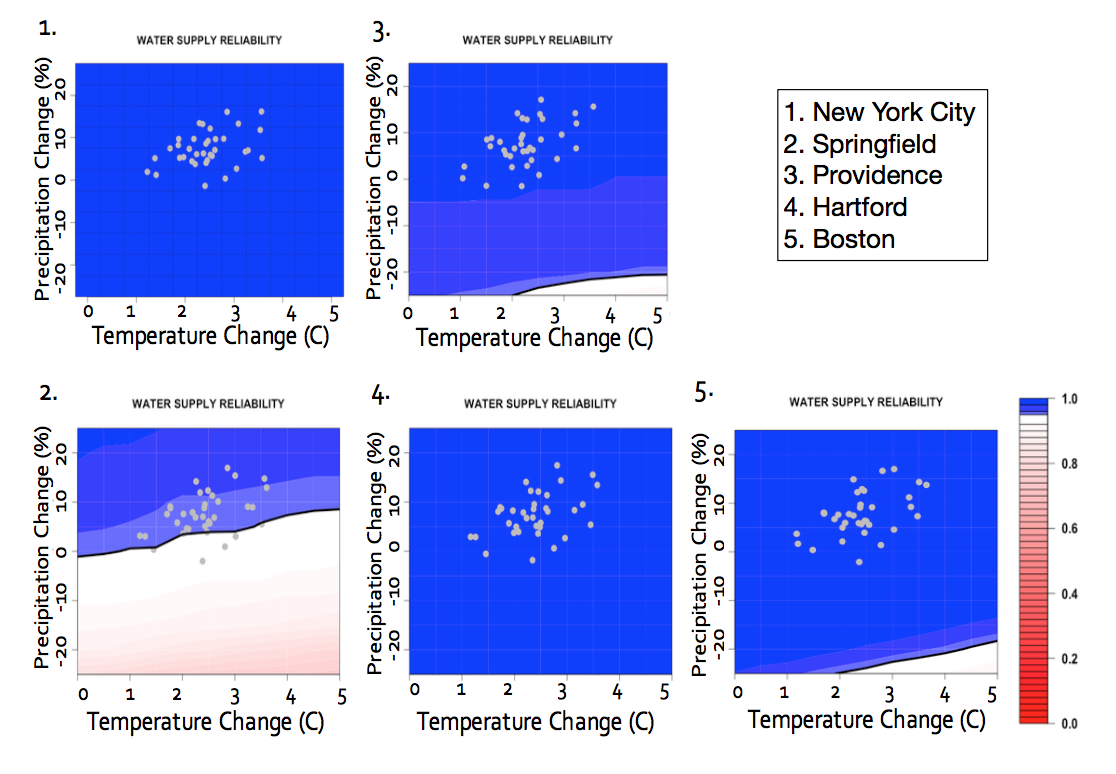
Climate stress testing Northeast water supply: an assessment of vulnerabilities and climate risk exposure (in prep)
In the northeastern United States water is generally thought to be abundant. Yet, increasing pressures on water utilities throughout the region, including new constraints on water withdrawals, requirements to release additional water for ecological purposes, and emerging concerns associated with climate change, may constrain their ability to supply reliable water. Assessing the vulnerability of any particular system is challenging because of a variety of factors that go beyond simple changes in precipitation and temperature, such as the size of the watershed, storage volume, required releases, and water demand. This analysis uses a vulnerability-based framework, based on stress testing, to identify problematic scenarios first and then uses climate information to provide context regarding the risk associated with those scenarios. The approach is demonstrated in an analysis of several major cities of the Northeast U.S.: New York City, NY, Boston, MA, Springfield, MA, Hartford, CT, and Providence, RI. Through comparative analysis, this paper uses a comprehensive approach to characterizing climate risks to water supply that synthesizes across the findings of individual studies and in doing so contributes to a deeper understanding of climate risks to water supply. Results show how vulnerabilities can be compared for different systems to help prioritize adaptation.